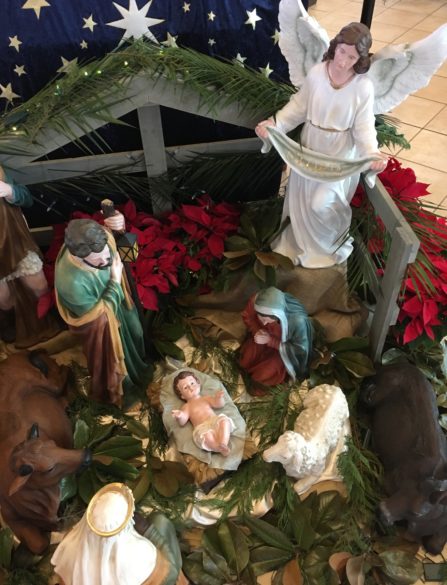

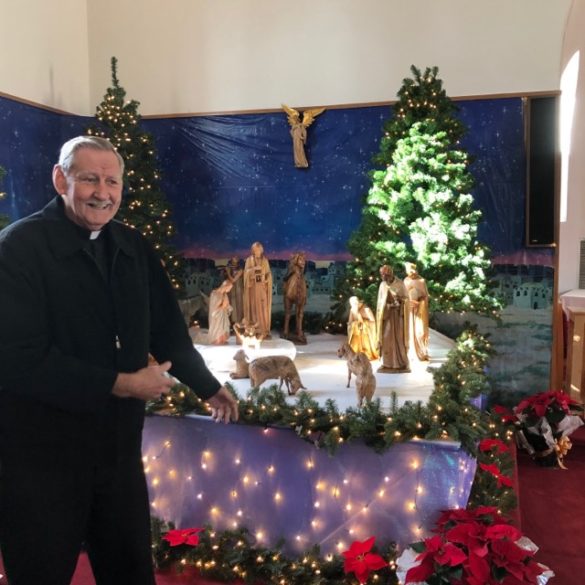
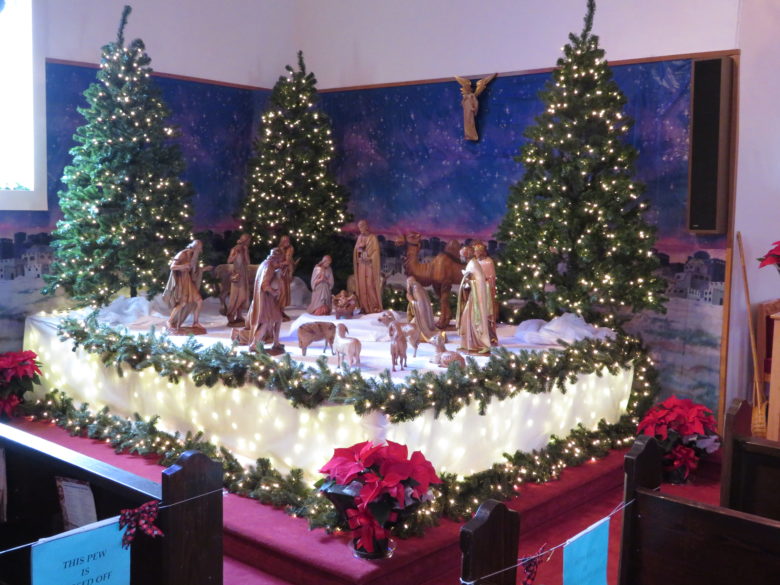
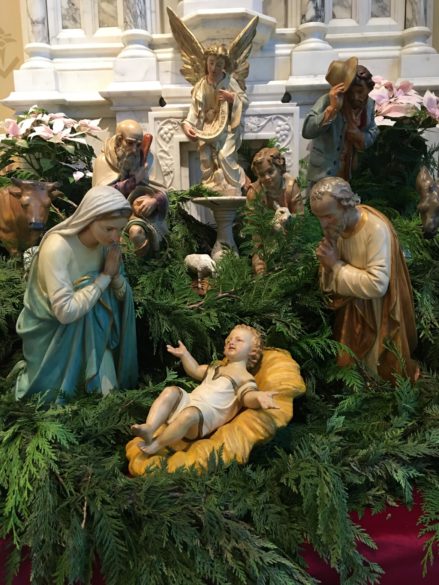
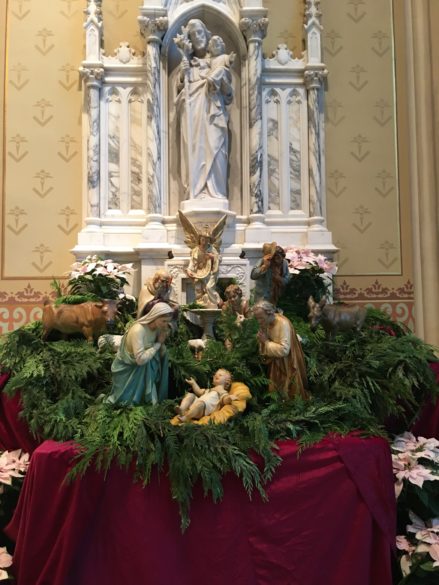


By Junno Arocho Esteves
VATICAN CITY (CNS) – The Christmas tree and Nativity crèche should evoke the joy and the peace of God’s love and not the selfish indulgence of consumerism and indifference, Pope Francis said.
Meeting Dec. 10 with delegations from Andalo in Italy’s Trentino-South Tyrol region and from Peru’s Huancavelica region – responsible, respectively, for the Christmas tree and the Nativity scene in St. Peter’s Square – the pope said the traditional Christmas symbols bring an atmosphere that is “rich in tenderness, sharing and family closeness.”
“Let us not live a fake, commercial Christmas! Let us allow ourselves to be enveloped by God’s closeness, by the Christmas atmosphere that art, music, songs and traditions bring to our heart,” he said.
The delegations were at the Vatican for the evening ceremony to light the Vatican Christmas tree and unveil the Nativity scene. However, the Vatican announced earlier that due to less-than-favorable weather predictions for the evening, the traditional outdoor ceremony would be held inside the Paul VI hall.
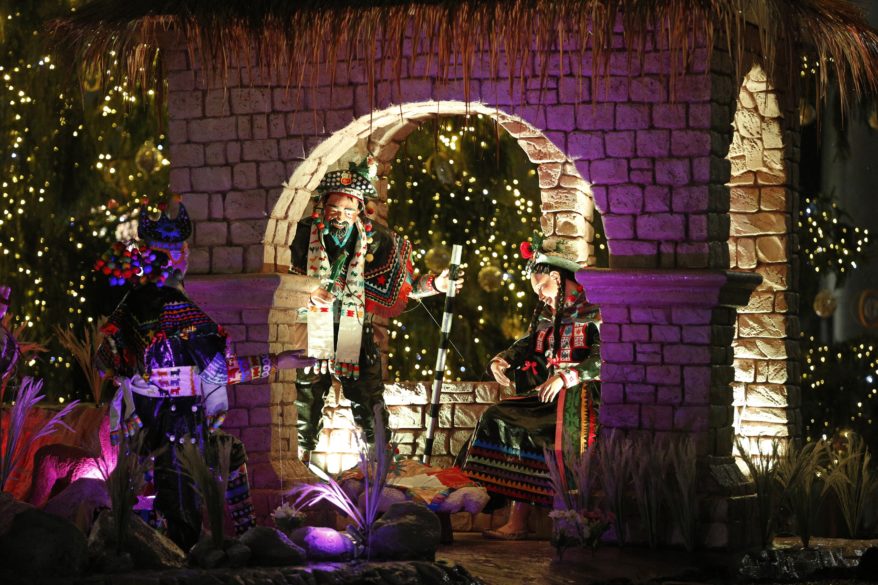
In the evening, despite the rain and cold temperatures, dozens gathered in St. Peter’s Square to witness the lighting of the Christmas tree. In the audience hall, the sounds of festive holiday music in Quechua played as videos of a children’s choir from Huancavelica were shown to commemorate the Andean-inspired crèche.
The Nativity scene in St. Peter’s Square featured 30 statues depicting Mary, Joseph, the Three Kings, shepherds and various flora and fauna from Huancavelica. The figures were dressed in the traditional bright, multicolored garments of the region’s Indigenous Chopcca people.
During the meeting with Pope Francis, the two delegations were joined by a group of young men and women from a parish in Padua who created the Nativity scene displayed in the audience hall.
Expressing his gratitude to the delegations for their gifts, the pope said the traditional garments worn by the figures in the Nativity scene “represent the people of the Andes and symbolize the universal call to salvation.”
“Jesus came to the world through the concreteness of a people to save every man and woman, of all cultures and nationalities. He made himself small so that we might welcome him and receive the gift of God’s tenderness,” he said.
He also said the spruce tree was a “sign of Christ” and a reminder of God’s gift of uniting “himself with humankind forever.”
As Christmas festivities draw near, Pope Francis said the créche remains a symbol of hope that God “never tires of us” and that he chose to dwell among men and women “not as one who stands on high to dominate, but as the one who stoops low, small and poor, to serve.”
“For it to be truly Christmas, let us not forget this,” the pope said. “God comes to be with us and asks us to take care of our brothers and sisters, especially the poorest, the weakest and the most fragile, those whom the pandemic risks marginalizing even more.”
IN EXILE
By Father Ron Rolheiser, OMI
I could never be a literary critic, not because I can’t tell good literature from bad, but because I lack the hard edge. If I dislike a book, I hesitate to say so. Conversely, if I like a book, I tend to be more its cheerleader than its critical assessor. Be that as it may, I want to strongly endorse Ashlee Eiland’s new book, Human(Kind) – How Reclaiming Human Worth and Embracing Radical Kindness Will Bring Us Back Together.
This is not some sentimental, feel good book on how we need to be kind to each other. It’s more like a Sermon on the Mount for our time, or at least how we might work towards living the Sermon on the Mount. How do we remain soulful, warm, and human inside all the things that tend to unhealthily either inflate or embitter our hearts? Here’s how she describes her book.
“This is my story – a story of a black woman who grew up in the South and who discovered some wholeness and some holes along the way. As I looked back over my life, there were moments I remembered so vividly. Upon reflection, they were vivid because they mattered. They marked me in both beautiful and painful ways. But as I sat with these moments and memories, I realized they mattered because they taught me to be kind to my own worthy self. Recalling them helped me acknowledge the good gifts I’ve been given, the gifts I now hope to give to others, and enabled me to see the painful and hard moments as opportunities to be more fully human, to remind myself to receive grace where there’s been grievance.”
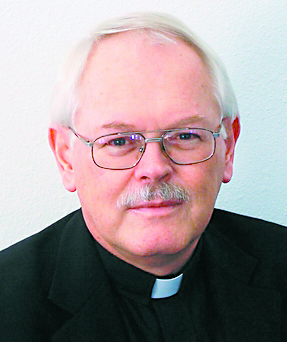
The book is a series of stories from her life, all of them told by a gifted storyteller and all of them written with an aesthetics that never sinks into sentimentality or self-pity. And they are stories both of being graced and being wounded. Eiland’s life has been one of contrasts.
On the one hand, her life has been one of privilege – loving parents, the opportunity for a first-rate education, never economically desperate, and always with a supportive family and community around her. On the other hand, she has lived as a black woman inside a world of injustice and inequality. She has had to live as one who must forever be conscious of the color of her skin, who every time she walks into a room needs to look around to see how many others like her are in the room. She also had to endure the ultimate racial slur being shouted in her face. And so, as she says, she has been deeply scarred both in beautiful and painful ways.
For example, one of her stories recounts an incident in which she went out to a restaurant with some Asian friends for a Korean specialty of pork dumplings. The evening went well and driving back from the restaurant and laughing with each other in the car, she felt a life-long weight lift from her. “For the first time, I didn’t feel as if I had to qualify the conversation with a reminder to my friends – or to myself – of my actual race. … Before that day, I felt I had to tiptoe out of one world into another. But that kind of posture, I realized, is laced with shame. It allows the ‘not fully enough’ narrative to run rampant, terrorizing what is oftentimes the best part about sharing our lives with one another.”
We need her narrative. We live in a time of bitterness and division, when civil discourse and respect have broken down, where we demonize each other, where injustice, inequality, and racism still define us more than their opposites, and where kindness is often seen as a weakness. Moreover, there is an ever-intensifying hypersensitivity where even a well-intended word is a potential landmine. Paranoia has replaced metanoia, bringing out the worst in us.
Ashlee Eiland gives us a formula for bringing out what is best in us. How do we react to injustice, offense,and demonization? For example, here is how she reacted after trying to be good to someone and being repaid for her effort by the ultimate racial taunt being hurled in her face: “Humiliated, I went about my day, doing as much good as I could for an afternoon … but knowing that sometimes even doing good is not enough. Sometimes we just have to sit with what’s hard and humiliating about the difficult work of unity and do our best not to let it kill us. Instead, we need to let it shape us in some other way that sobers us up and forces us to take off our rose-colored glasses, to admit that sometimes moving closer and trying to do good and closing the gaps between us and others doesn’t work out the way we want. But maybe it’s worth showing up anyway.”
Lacking the critical edge, I’m not always sure of what constitutes “soul music,” but I can still recognize “soul literature.”
(Oblate Father Ron Rolheiser is a theologian, teacher and award-winning author. He can be contacted through his website www.ronrolheiser.com.)
By Carol Zimmermann
WASHINGTON (CNS) – In the Supreme Court’s first major abortion case in decades – which looked at Mississippi’s ban on abortions after 15 weeks of pregnancy – the majority of justices Dec. 1 seemed willing to let that ban stay in place.
But it was unclear if they would take this further and overturn Roe.
While the justices considered the state law and the possible ramifications of supporting it or not, people on both sides of the issue were on the steps of the Supreme Court revealing the divide on this issue by what they were shouting or with their placard messages calling abortion murder or an essential right.
At several points during the argument, Chief Justice John Roberts continued to bring the focus back to the question at hand: the 15-week ban on abortions in Mississippi, which was struck down by a federal District Court in Mississippi in 2018 and upheld a year later by the New Orleans-based U.S. Court of Appeals for the 5th Circuit.
A 15-week ban is not a “dramatic departure from viability,” Roberts said.
The point of viability – when a fetus is said to be able to survive on its own – was key to the discussion because the Supreme Court has consistently ruled that states cannot restrict abortion before 24 weeks or when a fetus is said to be able to survive on its own.
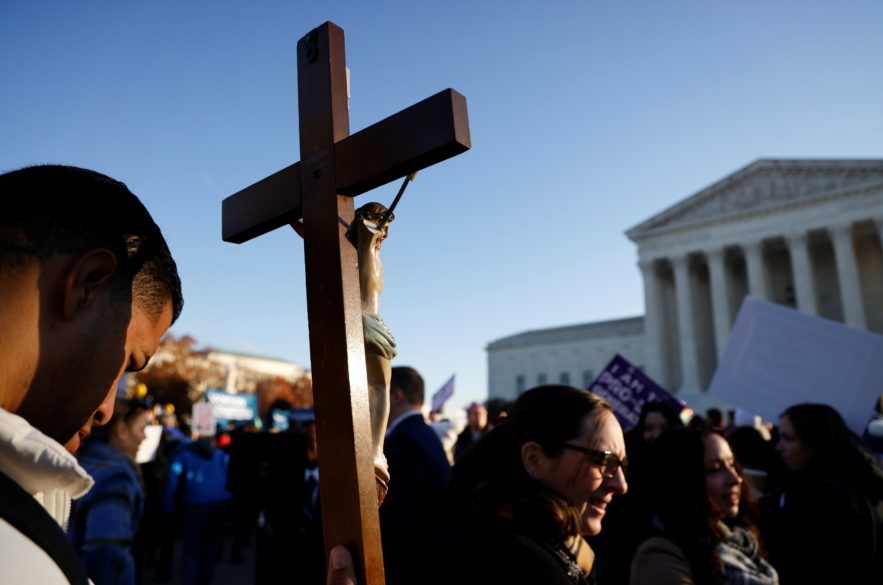
Roberts seemed hesitant to take this further, asking if the court were to overturn Roe v. Wade, if it also would be asked to reconsider several other cases that people could say have been wrongly decided.
And that discussion of previous court decisions, the use of “stare decisis” came up frequently. The term, which literally means to stand by things decided, was used in reference to previous abortion cases but also several other cases with some justices pointing out that precedence should not always be a deciding factor and that some cases did need to be overturned.
Justice Stephen Breyer indicated the court was treading on contested ground and was concerned that its decision could be seen as merely being political.
Justice Sonia Sotomayor took this a step further, saying the court would be seen as highly politicized if it were to overturn Roe and other related rulings. “Will this institution survive the stench that this creates in the public perception that the Constitution and its reading are just political acts?” she asked. “I don’t see how it is possible.”
But as the arguments continued, more reflection seemed to be on the issue of abortion itself and the possibility of bringing the issue “back to the people,” as Mississippi Solicitor General Scott Stewart suggested.
Stewart stressed that Roe and Casey court decisions “haunt our country” and “have no home in our history or traditions.”
Roe v. Wade is the 1973 decision that legalized abortion. Casey v. Planned Parenthood is the 1992 decision that affirmed Roe and also stressed that a state regulation on abortion could not impose an “undue burden” on a woman “seeking an abortion before the fetus attains viability.”
Justice Brett Kavanaugh emphasized the court was being forced to “pick sides” on a contentious issue and questioned why the court had to be the arbiter here.
“The Constitution is neither pro-life nor pro-choice,” he said, noting that it “leaves the issue to the people to resolve in the democratic process.”
Justice Clarence Thomas asked what those opposed to the state ban thought was the constitutional right to an abortion, and Justice Samuel Alito spoke of the fetus having “an interest in having a life.”
Julie Rikelman, of the Center for Reproductive Rights, who represented the Jackson Women’s Health Organization in its challenge of Mississippi’s abortion law, said keeping the law in place would cause “profound damage to women’s liberty, equality and the rule of law.”
U.S. Solicitor General Elizabeth Prelogar went on to argue that overturning the court’s previous abortion rulings would have “severe and swift” effects causing abortion restrictions in other states.
If the court sides with Mississippi, it would be the first time the court would allow an abortion ban before the point of viability and could lay the groundwork for other abortion restrictions that other states could follow.
The U.S. Conference of Catholic Bishops, in a court brief supporting Mississippi, stressed that abortion is not a right created by the Constitution and called it “inherently different from other types of personal decisions to which this court has accorded constitutional protection.”
Referring to the court’s major abortion decisions, the brief warned that if the Supreme Court “continues to treat abortion as a constitutional issue,” it will face more questions in the future about “what sorts of abortion regulations are permissible.”
Just as the arguments started, the USCCB issued a statement from Archbishop William E. Lori of Baltimore, chairman of the Committee on Pro-Life Activities, which said: “We pray that the court will do the right thing and allow states to once again limit or prohibit abortion and in doing so protect millions of unborn children and their mothers from this painful, life-destroying act.”
A ruling in the case is expected in July.
(Follow Zimmermann on Twitter: @carolmaczim)
GUEST COLUMN
By Shannen Dee Williams (CNS)
On Tuesday, Nov. 30, 2021, the third day of Advent and the last day of Black Catholic History Month, I visited the historic Elmwood Cemetery in my hometown of Memphis, Tennessee, and gazed upon the gravesite of “Servant of God” Sister Thea Bowman, one of six African Americans currently under consideration for sainthood.
Although I grew up Black and Catholic, I did not learn about the existence of African American nuns until 2007, while enrolled in graduate school.
Two years later, a conversation in Memphis with then-Bishop J. Terry Steib directed me to the principal’s office of the diocese’s Holy Names of Mary and Jesus School for an interview with Sister Donna Banfield.
During our meeting, Sister Donna, who led Holy Names from 2006 to 2010, informed me of Sister Thea’s final resting place in the city.
I also learned that Sister Donna, a former president of the National Black Sisters’ Conference, led her students on an annual trip to Sister Thea’s gravesite to pay their respects and bear to witness to the lived reality of Black Catholic saints in our midst.
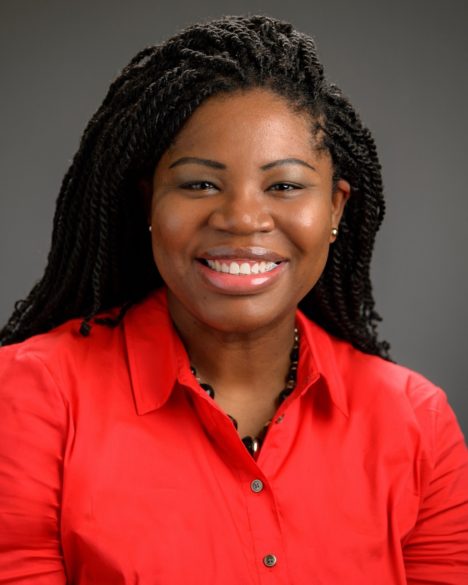
Inspired by Sister Donna’s leadership, I decided to make my own pilgrimage to Sister Thea’s gravesite but not until I completed my planned book on the largely hidden history of the nation’s Black sisters. I wanted the visit to be special, and it truly was.
Reflecting on Sister Thea’s short but powerful epitaph, “She tried,” etched onto her family’s headstone, I thanked her for championing the intellectual, spiritual and cultural gifts of the African American community in the face of discrimination and resistance in our church. I also thanked Sister Thea for being a model of excellence and compassion for all humankind.
“Be woman. Be man. Be priest,” Sister Thea liked to say. “Be single, be married. … Be Irish American, be Italian American, be Native American, be African American, but be one in Christ.”
In these trying times, one can only wonder what Sister Thea, an unapologetic champion of Black life, mothers, families and social equality, might say about the current state of our bitterly divided nation and church.
From the various attempts to stop the teaching of Black history and the nation’s original sins of racism and colonialism to the global climate crisis to the current attempts to roll back the civil rights victories of the middle decades of the 20th century – especially voting rights – I also wonder what advice Sister Thea, a member of the pioneering generation of Black Catholic women and girls who desegregated the nation’s white sisterhoods, would give those fearful of the uncertain future ahead.
In her final years, Sister Thea, a Mississippi native who was also the granddaughter of enslaved people, made it clear where she stood on all forms of injustice. “I will never reconcile myself with … racism … sexism … classism … anything destructive,” she stated.
Too often those who champion Sister Thea and her canonization cause erase her clear understanding of the interconnected dimensions of oppression.
In so doing, they do a terrible disservice to her and other freedom fighters, who always understood that any demand for racial and educational justice not connected to the larger fight for human rights and justice was insincere and illegitimate.
As this nation seems poised with a return to a society that Sister Thea, and so many Black sisters like her fought to bury, I pray for the strength and grace to meet the stark challenges ahead.
During this Advent season, I also pray for the wisdom to remember Sister Thea’s great sacrifice for her beliefs and the courage to seek new ways of living that no longer require martyrdom to convince opponents of human equality to uphold the church’s most basic social teaching of affirming the lives and dignity of all people.
(Shannen Dee Williams is a cradle Catholic and associate professor of history at the University of Dayton. She is the author of “Subversive Habits: Black Catholic Nuns in the Long African American Freedom Struggle,” which will be published by Duke University Press on May 27, 2022. Follow her on Twitter at @BlkNunHistorian.)
Reflections on Life
By Melvin Arrington
St. Nicholas (270-343), whose feast day is December 6, is one of the most popular saints among children and adults alike, undoubtedly due to his association with Santa Claus. In spite of his renown, few facts are known about his life, and much of what we do know is probably legendary.
Born into a wealthy family, Nicholas became famous in his time for his anonymous acts of charity. When he learned of members of his community who were in great need, he would, under the cover of night, secretly enter their house and leave bags of gold.
The most-often recounted story of his generosity involved a poor man’s three daughters who, because they lacked dowries, were unable to marry. This meant they were facing the only other option available to them: a life of prostitution. On three separate nights Nicholas threw a bag of gold through the man’s window, thereby providing the means for each of the three girls to marry.

Nicholas served as bishop of Myra, a city located on the Mediterranean Sea in Asia Minor (modern-day Turkey). During the persecutions of the Emperor Diocletian, he was imprisoned for his faith, but released when Constantine rose to power. In the 11th century, after the Saracens took control of Myra, his relics were secretly removed from the Myra Cathedral and transferred to Bari, Italy. Over the centuries his popularity continued to grow and spread throughout Europe.
At the Council of Nicaea (325) Nicholas condemned Arianism and, according to legend, confronted Arius, the promoter of this heretical doctrine, striking him in the face. Whether he punched him in the nose or, more likely, slapped him, it was a bold gesture of righteous indignation, indicative of his zeal for defending the truth.
Countless miracles have been attributed to him, among them stories of sailors rescued at sea, corn multiplied in order to feed starving people, and children who had been murdered being brought back to life. It is said that a sweet-smelling oil with healing properties exudes from his remains to this day.
So, how did this fourth-century bishop evolve into the Santa Claus and Father Christmas of modern times? Much of it has to do with tales of the saint’s fabled generosity. Those accounts became a primary source, along with the visit of the Magi to the Christ Child, for our custom of giving gifts during the holidays. Linguistics also played a role in this makeover. Over time “Saint” became “Santa” and the last two syllables of his name, “cholas,” turned into “Claus.”
My notion of what Santa Claus looks like was formed by depictions of the jolly ole fellow in Coca-Cola advertising in the 1950s and by the huge Santa that would miraculously appear in the display window at the old McRae’s department store in downtown Jackson during the Christmas shopping season. Both showed him to be a plump, jovial, white-haired old man with a prodigious beard, dressed in a flashy red suit. I’m almost certain the original St. Nicholas looked nothing like those figures.
Popular culture preserves this link between the saint and the North Pole’s most celebrated resident, as seen in the much-loved poem “A Visit from St. Nicholas” by Clement Clarke Moore (1823), which begins: “’Twas the night before Christmas, when all through the house / Not a creature was stirring, not even a mouse; / The stockings were hung by the chimney with care, / In hopes that St. Nicholas soon would be there.”
By 1953, when the singing cowboy Gene Autry released the version of the Yuletide classic, “Santa Claus Is Comin’ to Town” that I remember hearing as a child, the transformation to Santa Claus was complete.
Traditionally, much of the talk during the holidays is focused on acquisition of material goods: “What did Santa Claus bring you?” or “What did you ‘get’ for Christmas?” Our modern culture, through the media, preaches the message over and over, non-stop, that the more things we accumulate the happier we will be.
Just consider all the advertising we see this time of year for luxury items. But more is really less because we eventually grow weary with what we have and seek to acquire different, newer, better products. We want more and more but can never get enough.
Worldly goods just can’t satisfy the longings of the human heart. They may give us a temporary feeling of fulfillment and contentment, but that quickly fades, and soon we’re looking for something else to feed the hunger of our acquisitive nature.
St. Nicholas, on the other hand, teaches that we should place the emphasis not on receiving, acquiring and accumulating, but on giving – a concept that makes no sense at all from a worldly perspective.
Rather than just counting what I have received, perhaps I should reflect instead on what I have given this year. My reflection should also include the question, “Did I give from the heart or just out of a sense of social obligation?”
Love of God and neighbor will motivate us not only to make monetary donations but also an offering of ourselves, that is, our time and talents. There are no substitutes for giving and service. These are the only ways we will find fulfillment and true happiness.
Yes, Virginia, there is a Santa Claus. He’s real, and his true name is Nicholas. On Christmas Eve Ole St. Nick is coming to town and, like the Magi, he’s bearing gifts. May we all join in the spirit of the season and be gift-bearers as well. Merry Christmas to one and all!
(Melvin Arrington is a Professor Emeritus of Modern Languages for the University of Mississippi and a member of St. John Oxford.)
By Julia Williams
JACKSON – Seven years ago (2015), the #iGiveCatholic campaign for #GivingTuesday took off as an initiative of the Archdiocese of New Orleans, raising over a million dollars in a 24-hour period for Catholic parishes, schools and ministries. Subsequently, this campaign spread to other dioceses throughout the nation, with participating dioceses increasing with each year. The 2021 #iGiveCatholic campaign had a great impact, with partnerships including the U.S. Conference of Catholic Bishops and the National Catholic Educational Association, raising over $15 million for Catholic entities this year.
The Diocese of Jackson joined the #iGiveCatholic campaign in 2016, making this year the sixth year of participation in the nationwide campaign, and generating over $183,000 in gifts to various parishes, schools and ministries within the diocese.
The success of each organization is based on the amount of effort put forth in publicizing their causes, or reason to raise funds, by reaching out to donors via social media (Facebook, Instagram, emails, websites, etc.) and print publications such as bulletins, posters and flyers.
The #iGiveCatholic campaign focuses on electronic giving and includes a specific website provided to the organizations at no cost, in hopes to encourage greater participation and help generate funds. Each year, the diocese receives a generous grant from Catholic Extension to cover half of the online giving platform fees.
Also included in the grant from Catholic Extension was additional money earmarked for training or prizes to aid in a successful campaign and help generate excitement. Six prizes were awarded: Four $250 prizes in random drawings for entities who had online donors during specific time frames; and two $500 grand prizes awarded to one parish and one school or ministry who had the most online donors overall, including the Advanced Giving phase prior to #GivingTuesday. Grand prize winners this year were St. Francis of Assisi Catholic Church in Madison and St. Joseph Catholic School in Madison.
The National Sponsor of #iGiveCatholic this year was Our Sunday Visitor, a Catholic publisher that serves millions of Catholics globally through its publishing and communication services. For the past few years, Our Sunday Visitor has donated offertory envelopes at no cost to participating organizations, to encourage donors, who otherwise would not want to give electronically, helping to increase participation and overall total giving.
Throughout history, Catholics have always been generous people. Our world and our society need to see and experience increased generosity, but more importantly, they need to see the joy Catholics have as we ‘give back’ out of gratitude in return for how we have been blessed.
Each year, we are so grateful to the Catholic Community as they support various ministries as they continue to “Give Thanks – Give Back – Give Catholic.”
By Rhina Guidos
WASHINGTON (CNS) – In front of the White House, a large group of women religious and their supporters shouted just a few feet away from the president’s residence Dec. 3, calling him to end a Trump-era policy that keeps migrants out.
Though they were there to denounce a different policy, they called on President Joe Biden to end the Migrant Protection Protocols, or MPP.
Better known as “Remain in Mexico,” the Trump-era policy that forces asylum-seekers to stay on the Mexico side of the border until their cases can be heard by U.S. immigration courts is about to restart.
Immigration advocates wasted no time in criticizing the restitution of MPP, saying the president has not kept a promise he made to get rid of it.
The Biden administration tried to end MPP with an executive order issued by President Joe Biden shortly after he was inaugurated that temporarily halted the policy. Subsequently, it was officially ended in June.
But in August a judge with the U.S. District Court for the Northern District of Texas told administration officials to continue the policy, saying officials had not ended it properly. On Aug. 24 the U.S. Supreme Court refused to block the judge’s ruling and ruled the administration had to restart the policy.
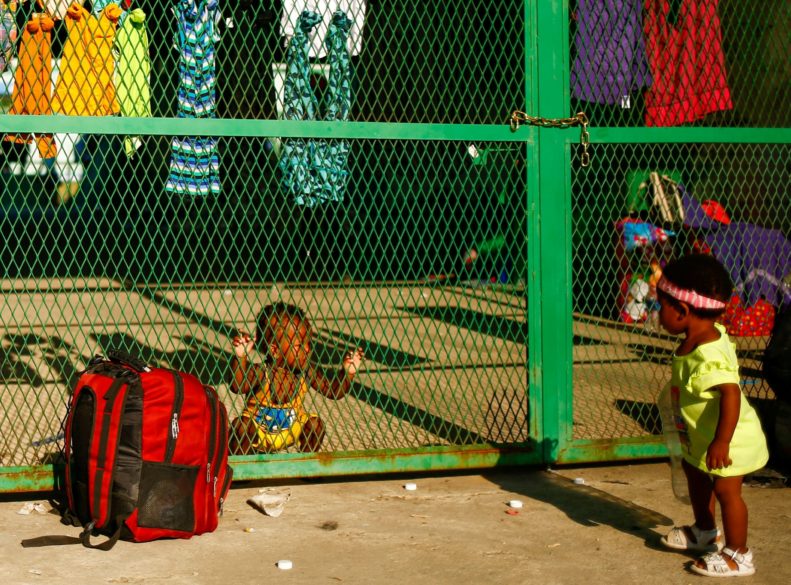
The administration has vowed to end MPP but said that, for now, the U.S. Department of Homeland Security has to comply with the order and planned to restore the program at one location on or around Dec. 6, and then expand it.
“Reinstating MPP is a stain on our nation,” said Anna Gallagher, executive director of the Catholic Legal Immigration Network, in a statement from the Interfaith Immigration Coalition, a group of 55 national, faith-based organizations, whose members spoke out shortly after the announcement of the policy’s restitution.
Immigration advocates said it puts people in danger by forcing them to stay in dangerous border towns on the Mexico side that are ruled by gangs and drug dealers.
“It is a dangerous and deadly policy. As happened during its prior implementation, vulnerable men, women and children will suffer denigration, disrespect, assaults, rapes and murders,” said Gallagher. “It is inhumane, unjust, and violates our obligations under our own legal system and international refugee law.”
“Mr. President, we implore you to follow the Catholic values that form the foundation of your lifelong public leadership of our country,” she said. “It is time to draw on those values and prioritize the lives of the suffering men, women and children waiting at our border over politics. It is time that you do what is humane and stop MPP.”
In Texas, Attorney General Ken Paxton said the reimplementation was a “huge win for Texas” and via Twitter said it was needed to “restore safety and order along our southern border.”
But faith groups, which included many Catholic advocates, reacted with great disappointment.
“We are deeply dismayed by the reimplementation of MPP,” said Auxiliary Bishop Mario E. Dorsonville of Washington, chairman of the U.S. Conference of Catholic Bishops’ Committee on Migration for. “Unfortunately, attempts by the Administration to make this program ‘more humane’ – however well-intentioned – will not cure its inherent faults, nor will they alleviate its inevitable toll on human lives. We are especially concerned that this will perpetuate the existing tragedy of family separation, since many mothers and fathers are likely to feel compelled to part ways with their children in a desperate attempt to ensure their safety.”
The Interfaith Immigration Coalition said in its Dec. 2 statement that it wanted to express its “righteous anger at this immoral decision that will continue to deny migrants their internationally recognized right to seek asylum.”
At the border, Dylan Corbett, executive director of the Hope Border Institute in El Paso said this was time to restore protections, not taken them away.
“We can no longer afford half-measures or backsliding and the return of Remain in Mexico is a devastating step backwards,” one which puts people in danger, he said.
At the event featuring Catholic women religious in front of the White House, a man named Santiago from Honduras, who was helped by the Jesuit-run Kino Border Initiative in the area of Nogales, on both sides of the border, made a plea to Biden, saying “the border is a difficult place.”
Having escaped a kidnapping and praising God for guiding him, he pleaded for an end to measures that he said are putting people, including his family, in danger.
“The dead don’t need asylum, the living do,” he said.and walking with our brothers and sisters.”
“We will emerge from the present crises together,” he said, “as the church Christ has called us to be.”
By Junno Arocho Esteves
VATICAN CITY (CNS) – Adam Piekarski, a homeless man from Lódz, Poland, never imagined that the sketches he would draw in his free time while waiting for the public showers near Bernini’s Colonnade would lead to the opportunity of a lifetime.
In November, the Vatican Philatelic and Numismatic Office announced that its 2021 set of commemorative Christmas stamps would feature images of the Magi and the Holy Family painted by Piekarski.
“Art is my passion even though I never studied it,” Piekarski told Catholic News Service Dec. 1 from a quaint studio just across the street from St. Peter’s Square.
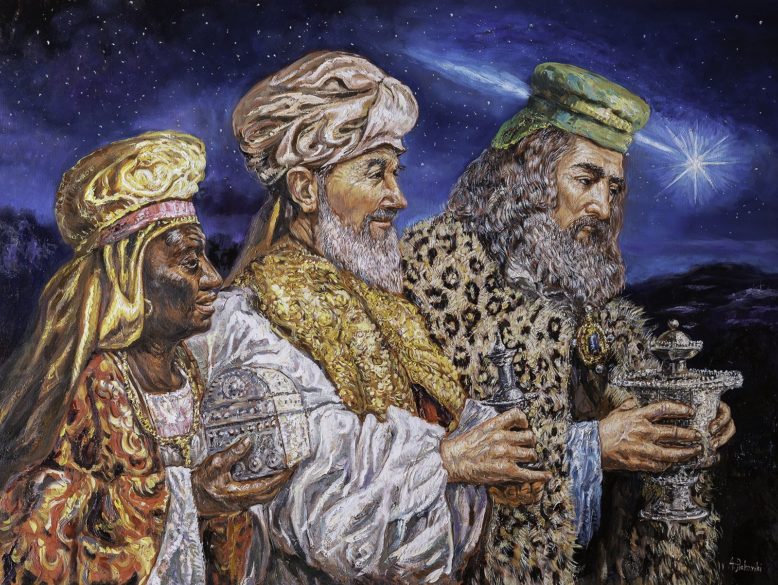

“He went to a technical school in Poland and studied gardening in Lódz,” added Redemptorist Father Leszek Pys, known by many as Father Ruben, a fellow Pole who was among the first to realize Piekarski’s talent.
Piekarski left Poland six years ago and, like many migrants, made his way to Rome seeking a better life.
However, upon his arrival, the harsh reality of finding work, coupled with a fondness for Italian wine, led Piekarski down the dark path of alcoholism that he continues to fight each day.
With Father Ruben serving as translator, Piekarski told CNS that his life began to change after meeting the Polish priest while waiting in line for the public showers for the poor at the Vatican.
Father Ruben told CNS that, at the time, he was trying to figure out a low-cost option for a painting of St. Clement Mary Hofbauer, co-founder of the Redemptorist congregation, to commemorate the 200th anniversary of his death.
Explaining his dilemma to Pallottine Sister Anna, a nun who volunteers helping the poor at the public showers, he was introduced to Piekarski, who would often spend his time sketching while waiting for his turn at the showers.
Father Ruben then provided Piekarski with paints, brushes and found a workspace in the crypt of the Church of Santa Maria in Monterone, where the burgeoning artist honed his artistic abilities.
His work drew the attention of Cardinal Konrad Krajewski, papal almoner, who then introduced Piekarski to Father Francesco Mazzitelli, then-deputy director of the Vatican Philatelic and Numismatic Office.
Father Ruben told CNS that when asked by Father Mazzitelli to design the 2021 Christmas stamps, Piekarski’s answer was an emphatic “no.” However, the Italian priest’s persistence finally moved the Polish artist to finally do it.
For the painting of the three Magi, Piekarski based their likeness on two friends who are also homeless; the third, he explained, was an original image meant to represent all homeless men and women.
Father Ruben noted that installing showers for the homeless at the Vatican was more than just an act of charity for the poor during the 2015 Jubilee Year of Mercy, but a fundamental gesture that gave homeless men and women dignity.
“You can’t give back someone’s dignity by giving them a sandwich or a euro nor even by asking them their name. That is more of a philanthropic gesture that makes us feel good about ourselves,” the Polish priest said.
“But for that person, that sandwich, that euro doesn’t change anything,” he added. “But allowing them to clean themselves means giving them back their dignity.”
While he continues to paint from a small studio at Palazzo Migliori, the Vatican’s homeless shelter, Piekarski now works as an evening security guard at a property owned by the Knights of Malta, who became acquainted with him after he completed a portrait of the late Fra’ Giacomo dalla Torre, the grand knight of the order who died in 2020.
“Life is a mystery and God wanted it this way,” Piekarski told CNS. “What has happened is a dream and I still can’t believe it. God has a great sense of humor.”
(Follow Arocho on Twitter: @arochoju)